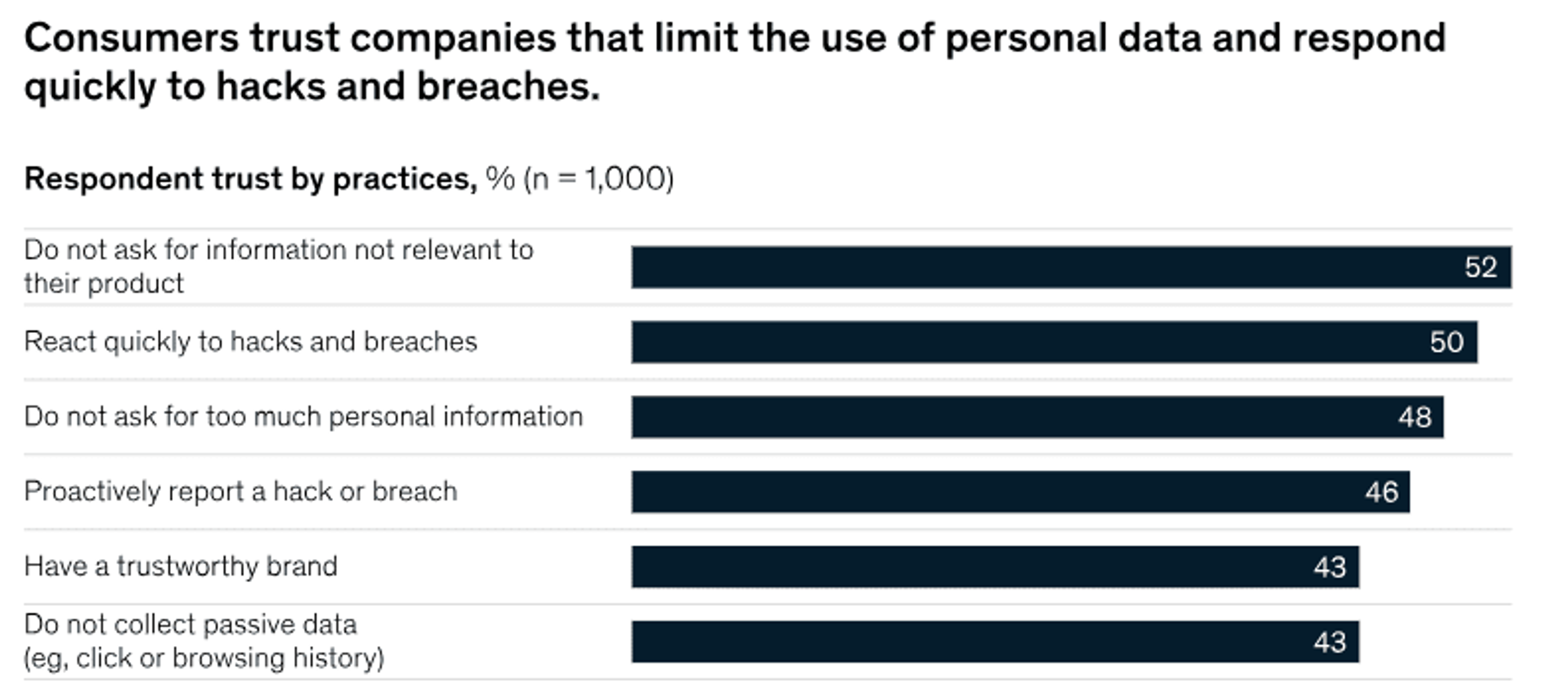blog
The 1-2-3 Guide to Patient Data Protection

SECTIONS
Healthcare and life sciences, like most every other industry, have been defined by unprecedented digital transformation over the past several years. At the center of it all is data, and as a result, patient data protection has emerged as a top priority for every type of organization in this ecosystem. Data protection is a legal and ethical obligation, and it’s critical to building patient trust that translates to quality care.
But in practice, patient data protection is complex. It requires streamlining technology tools, managing third-party contract partners, adhering to evolving regulations, training employees, responding quickly to issues that arise, and aligning with patient preferences and needs.
If you’re wondering “How do you manage it all?” you’ve come to the right place.
In this guide, we’ll cover the current state of patient data protection, specific actions and best practices you can implement at your organization, and the technology tools you need to support your strategy.
Key Takeaways:
- Patient data encompasses many types of information and sharing channels, meaning patient data protection can be complex.
- Two foundational steps for reducing patient data security risk is to only collect essential information and limit internal access controls only to authorized individuals.
- Data transmission within organizations and between organizations should be secured using protocols like HTTPS, VPNs, and encryption.
- New employees and current staff should be regularly trained on patient data protection.
- Third-party contract partners must be vetted and held accountable for high-standard data security practices.
- Master data management (MDM) tools can help you streamline and optimize data protection practices across your organization and ecosystem.
Patient Data Protection: A Quick Overview
Patient data encompasses several types of information, including personal, medical, and financial. This data is collected via more channels than ever before, and is shared between patients and providers as well as between healthcare organizations that play a role in the patient journey (ex: hospitals, primary care practices, insurance providers, and pharmacies).

Image Source: linkedin.com/pulse/more-less-healthcare-data
While this data enables care and can fuel insights and innovation, it also poses challenges that must be proactively addressed with solid patient data protection strategies.
With most patient data now stored and shared on digital channels, it’s at greater risk for data breaches and other cyber threats that can cause financial loss, identity theft, and other fraudulent activities. Even when these more serious problems are not at play, the continued concern exists about how to protect patient data privacy in a world where their data is so digitally accessible.
To address this concern, healthcare organizations are tasked with implementing stringent data protection measures such as:
- Only collecting essential patient information
- Adopting robust and secure data storage solutions
- Putting strict access controls in place
- Complying with evolving regulatory standards
- Conducting routine audits and reviews
As digitization and digital transformation in healthcare happen at a faster rate, patient data protection is becoming not only a legal requirement but a fundamental ethical responsibility—one that’s top-of-mind for patients as they choose their providers. Striking a balance between technological advancement and safeguarding patient confidentiality must be a priority.
Let’s take a closer look at some of the most effective ways you can protect patient data in your systems and build trust with the patients you serve.
How to Protect Your Patient Data
Be Intentional about Data Collection and Storage
Data collection can now be largely automated, which can lead to a collection “creep” of sorts—in other words, organizations begin collecting more data than they actually need. At the foundation of patient data protection is an intentional avoidance of this temptation, and a commitment to only collecting the information truly required for the situation.
According to McKinsey, three of the top six practicesOpens in a new tab mentioned by consumers as being trust-building with companies who use their data were related to limiting data collection. Specifically, they cited:
- Not asking for irrelevant information
- Not asking for too much personal information
- Not collecting passive data

Image Source: mckinsey.com
To align with this principle, limit your data collection only to the information you need to provide patient care. Be intentional about which data you collect from patients in various scenarios, and keep data fields relevant to the scenario at hand.
Strengthen Internal Data Access Control
Verizon’s most recent Data Breach Investigations Report found that across industries, internal actors are responsible for one-fifth (20%)Opens in a new tab of all data breaches. Much of the time these internal breaches are caused unintentionally, and happen as a result of ineffective or absent access controls.
Remediate this risk by implementing role-based access to patient data, granting authorized personnel access only to information relevant to their responsibilities. Multi-factor authentication can further fortify your systems so unauthorized individuals don’t mistakenly access data they shouldn’t.
Ensure Data Transmission Security
Digital data exchange between organizations is a daily occurrence in the modern healthcare industry, but it shouldn’t be done without the proper security controls in place. The sensitive nature of healthcare data also means organizations should go the extra mile to make this process airtight.
Utilize protocols such as HTTPS and virtual private networks (VPNs) to ensure that data transmission is always secure. In telehealth and remote consultations, use end-to-end encryption to guarantee patient information remains confidential.
Train Staff Regularly and Promote Awareness
Patient data protection should be a priority in all staff training and education that takes place for your new and current employees. Make it part of all new employee onboarding, highlighting your company’s unique protocols as well as industry-wide regulations and standards.
Require even your most experienced employees to participate in periodic professional development training to stay up-to-date on current best practices. The speed at which data and technology trends are evolving and changing suggests that every employee should do this at least yearly.
Promote continual awareness of patient data protection as a company priority however you can. Include reminders at key parts of various data handling processes, hold employees accountable for following access and sharing protocols, and make patient data protection resources readily available for employees to refer to as needed.
Be Prepared for Data Breaches
No matter how robust your patient data protection practices are, data breaches remain an inevitable occurrence for organizations. Be prepared by developing a comprehensive incident response plan that outlines steps to take in the event of a data breach. Assign roles and responsibilities, and test the plan through mock drills to ensure a swift and coordinated response when the real thing occurs.
Hold Data Sharing Contacts Accountable
When you handle patient data, it’s your responsibility to make sure third-party partners in your network use the same level of care that you do in protecting its security.
Vet your vendors and other network partners to be sure they adhere to the right levels of data protection standards. Be sure that data sharing and handling processes are clearly outlined and security responsibilities are included in contracts to mitigate risk.
Patient Data Protection: The Final Takeaway
In the digital age we live in, patient data protection in healthcare is a complex and shared responsibility that requires continual prioritization, attention, and updating. But putting the right tools in place to support your strategies can streamline the process and make it less of a burden to the company leaders and compliance teams who handle data protection.
Master Data Management (MDM) software tools like Gaine’s Coperer platform can help you centralize, standardize, and govern your data more effectively. Coperor is a highly scalable, ecosystem-wide master data management solution specifically designed to address the unique challenges of the healthcare and life sciences industries.
Coperor can help you streamline data sharing and storage within your organization and with contracted partners so patient data protection is an always-on priority.
Learn more about Coperer and how it can help you transform your data practices.
